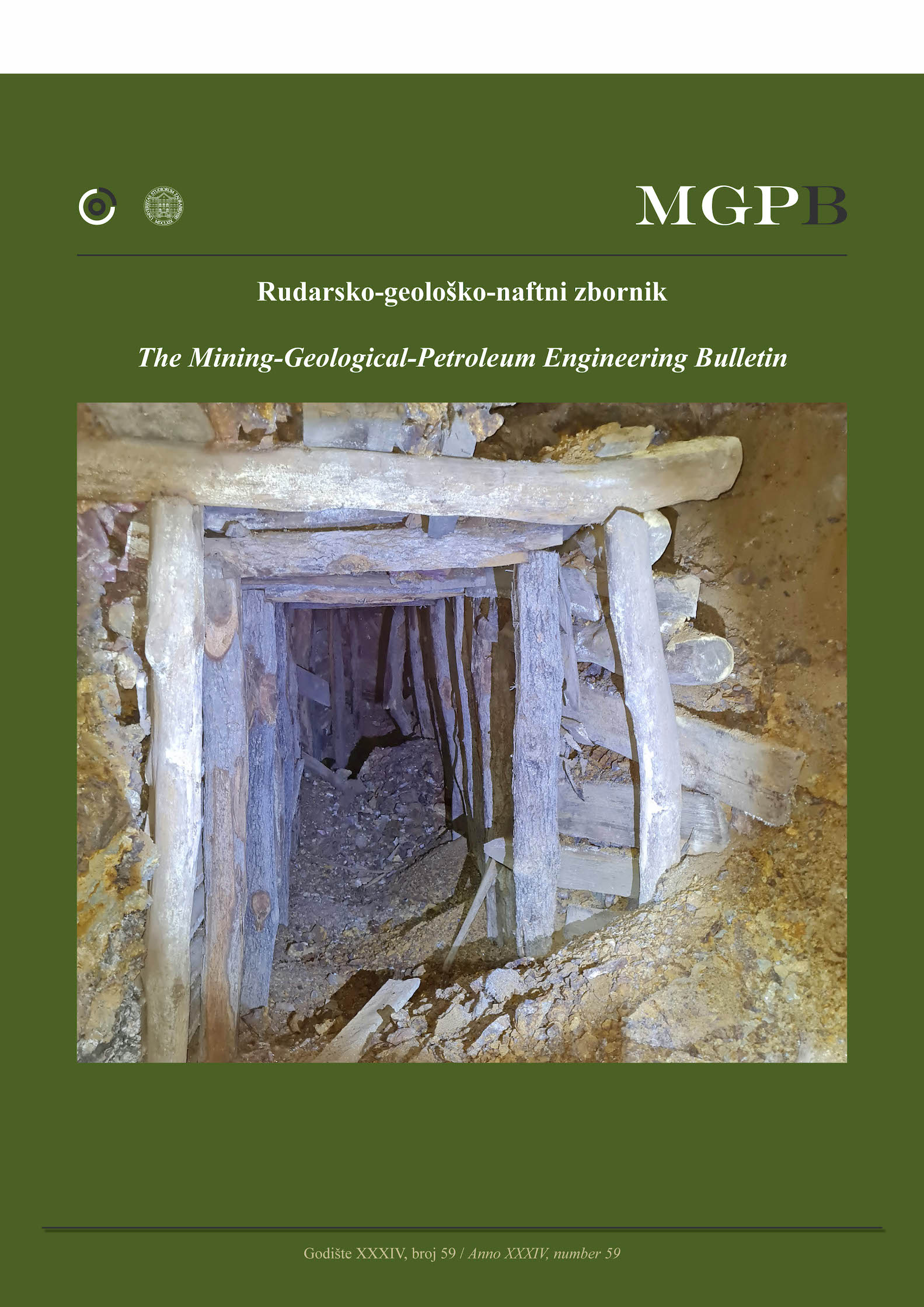Middle-Late Permian and Early Triassic foraminiferal assemblages in the Western Salt Range, Pakistan
DOI:
https://doi.org/10.17794/rgn.2022.3.13Keywords:
Guadalupian-Lopingian, Induan, foraminifera, fusulinids, mass extinction, Salt RangeAbstract
A newly obtained foraminiferal assemblage from the Guadalupian−Lopingian, and Induan of the Western Salt Range (Pakistan) comprises 47 species (including 7 species of fusulinoideans) of 24 genera and 71 species (including 9 species of fusulinoideans) of 41 genera, in Nammal and Zaluch sections, respectively. Our results show that only 4 species went extinct during the Guadalupian−Lopingian mass extinction (GLME), suggesting the GLME was minor for smaller foraminifers in the Salt Range. Most species went extinct during the Permian-Triassic mass extinction (PTME), except the two survivor genera, Nodosinelloides and Planiinvoluta. During the end-Permian mass extinction, majorities of the species became extinct in lower part of Chhidru Formation, beacuse they are not tolerant to the terigenious-clastic input in the upper part of Chhidru Formation. The extinction process of foraminifers in the Nammal and Zaluch sections has been documented for the first time. Five foraminiferal assemblages are established in the shallow marine shelf deposits of Western Salt Range, i.e., Wordian Geinitzina araxensis assemblage in tide-influenced subaqueous delta to middle shelf environment, Capitanian Baisalina pulchra assemblage and Wuchiapingian Codonofusiella schubertellinoides assemblage in inner-outer shelf carbonate deposits, Changhsingian Colaniella pseudolepida assemblage and Induan Nodosinelloides-Planiinvoluta assemblage in mixed siliciclastic–carbonate shelf setting. The Baisalina pulchra and Codonofusiella schubertellinoides assemblages have wide geographic distribution and have been found in Transcaucasus, China, Turkey, Crimea and Oman. The other three assemblages (i.e., Geinitzina araxensis, Colaniella pseudolepida, and Nodosinelloides-Planiinvoluta assemblages) found in this study are likely local/regional assemblages. The foraminifers were observed with the standard microscopic system Leica-DM500. A total of 681 specimens of foraminifers are reported in the Zaluch Group and Mianwali Formation of Nammal and Zaluch sections. Five hundred ninety-nine smaller foraminifers specimens were recovered. Among the smaller foraminifera, Nodosinelloides, Pachyphloia, Geinitzina, Colaniella, Hemigordius, Tuberitina, and Langella are the most dominant genera. Larger foraminifera genera include Nankinella, Codonofusiella, Reichelina, Necdetina and Pisolina, represented by 82 specimens. A total of 3 classes (e.g., Nodosariata, Fusulinata, and Tubothalamea) and seven orders (i.e., Miliolida, Spirillinida, Lagenida, Parathuramminida, Endothyrida, Fusulinida, and Earlandiida) are identified in the current study. Among them, Lagenida becomes the most dominant by diversity and abundance. Shannon diversity and other indices rise progressively from Wordian to Changhsingian in the shallow marine sediments before dropping to zero in the Early Triassic mixed siliciclastic–carbonate shelf deposits.
Downloads
Published
How to Cite
Issue
Section
License
Copyright (c) 2022 authors and journal

This work is licensed under a Creative Commons Attribution 4.0 International License.
Creative Commons-BY
Authors who publish with this journal agree to the following terms:
In agreeing this form, you certify that:
- You read the ethical codex of the RGN zbornik available at journal web.
- You submitted work is your original work, and has not previously been published and does not include any form of plagiarism.
- You own copyright in the submitted work, and are therefore permitted to assign the licence to publish to RGN zbornik.
- Your submitted work contains no violation of any existing copyright or other third party right or any material of an obscene, libellous or otherwise unlawful nature.
- You have obtained permission for and acknowledged the source of any illustrations, diagrams or other material included in the work of which you are not the copyright owner.
- You have taken due care to ensure the accuracy of the work, and that, to the best of your knowledge, there are no false statements made within it.
- All co-authors of this submitted work are aware of, and in agreement with, the terms of this licence and that the submitted manuscript has been approved by these authors.
Publication licence
You retain copyright in your submitted work, according to journal license policy (CC-BY). By signing this form you agree that RGN zbornik may publish it under the publication licence. In summary the licence allows the following:
Anyone is free:
- To copy, distribute, display, and perform the work.
- To make derivative works.
Under the following conditions:
- The original author must always be given credit.
- The work may not be used for commercial purposes.
- If the work is altered, transformed, or built upon, the resulting work may only be distributed under a licence identical to this one.
Exceptions to the licence
In addition to publishing the work printed under the above licence, RGN zbornik will also enable the work to be visible online.
The journal editorial can change the licence rules anytime but it cannot retroactively restrict author(s) rights.


